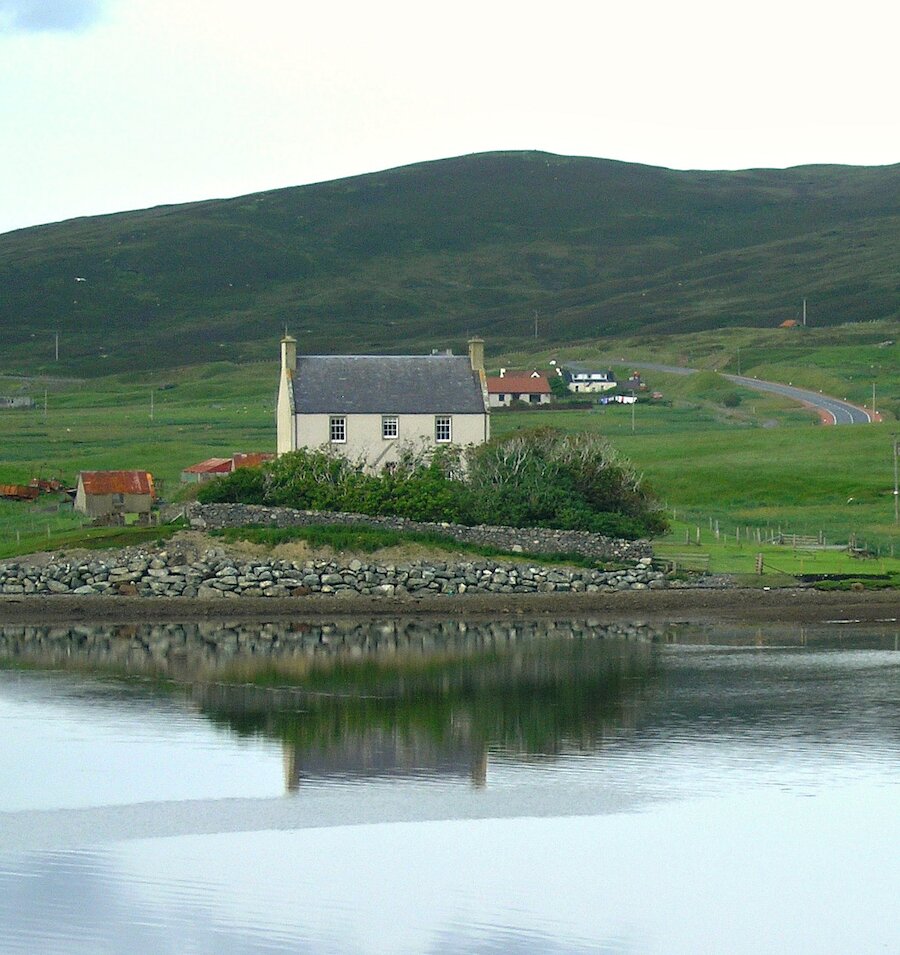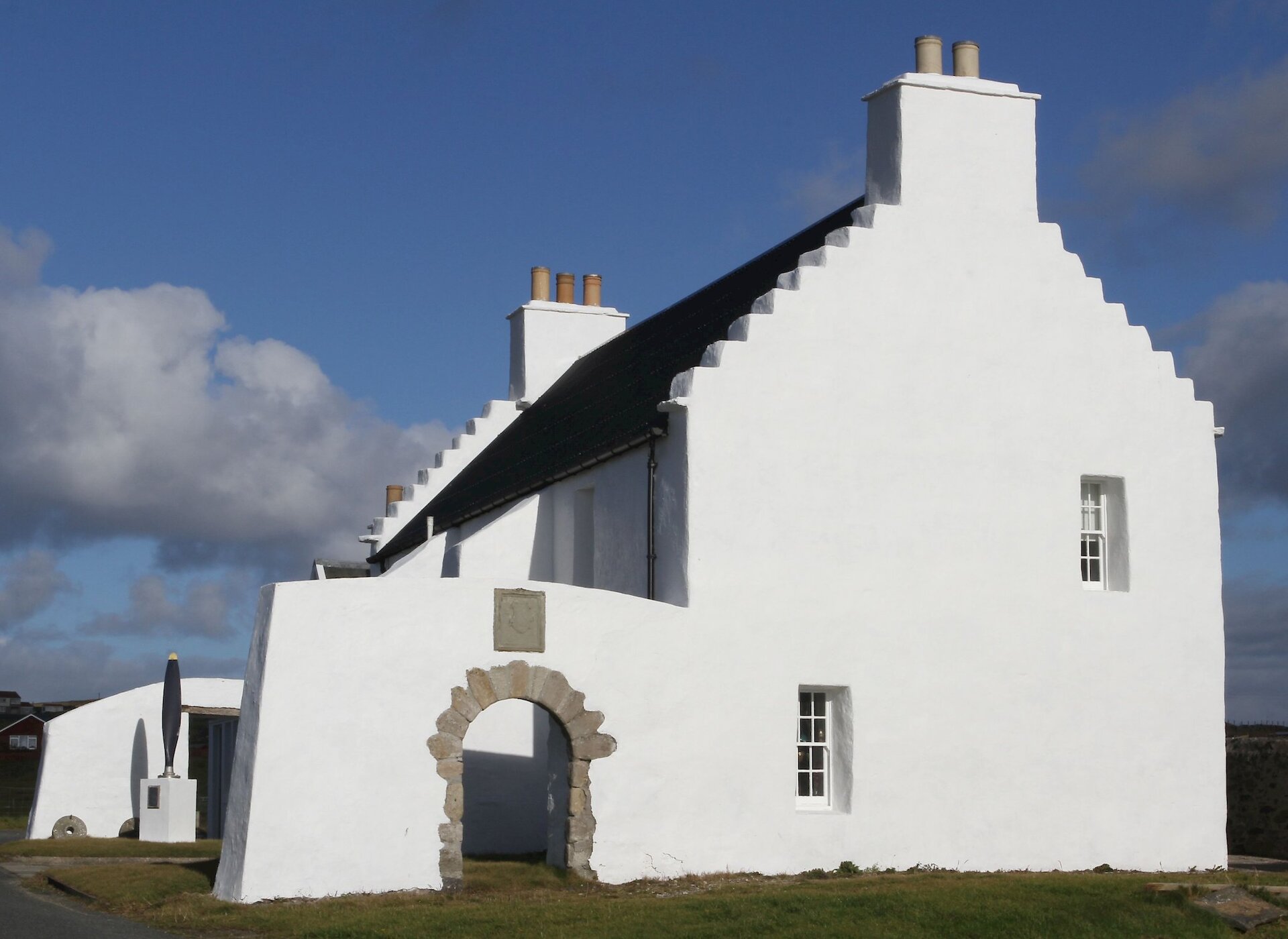Taking the sometimes busy B8076 north-east from Brae you will soon come to the pretty inlet of Voxter Voe where Burn of Valayre follows a steep sided glacial gorge down to the sea. Nestled in the valley near its own woodland is the Voxter Outdoor Centre that offers accommodation for groups interested in exploring the environment or engaging in outdoor activities.
Beyond Voxter the 2 mile (3.5km) straight to Graven takes you past the renowned wartime airfield of Scatsta, now used by the oil industry. At the Houb of Scasta there is a viewpoint and interpretation panel for Sullom Voe Oil Terminal at the other side of the voe. In bank of the small burn just below the viewpoint there is a sand layer in the peat deposited by a tsunami that swept across the area about 7500 years ago.


